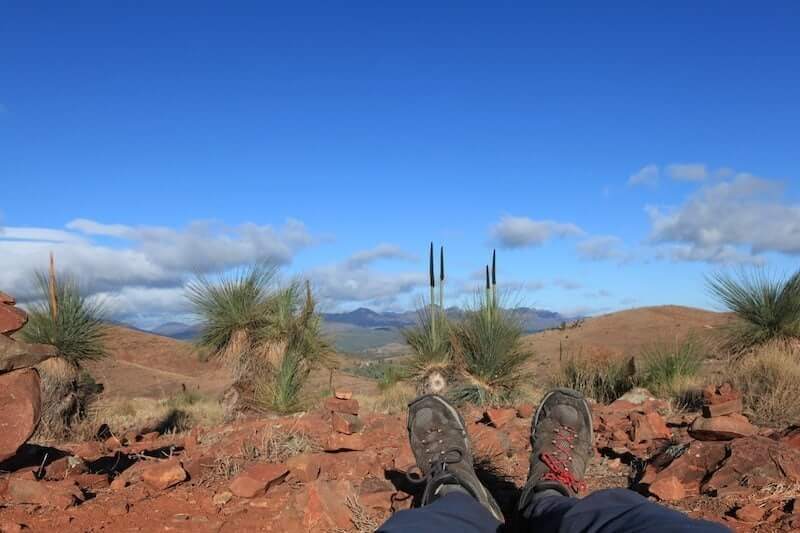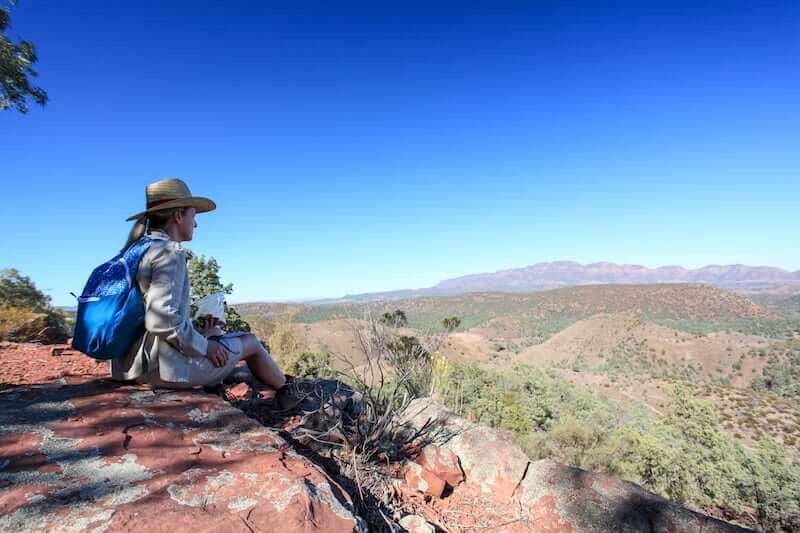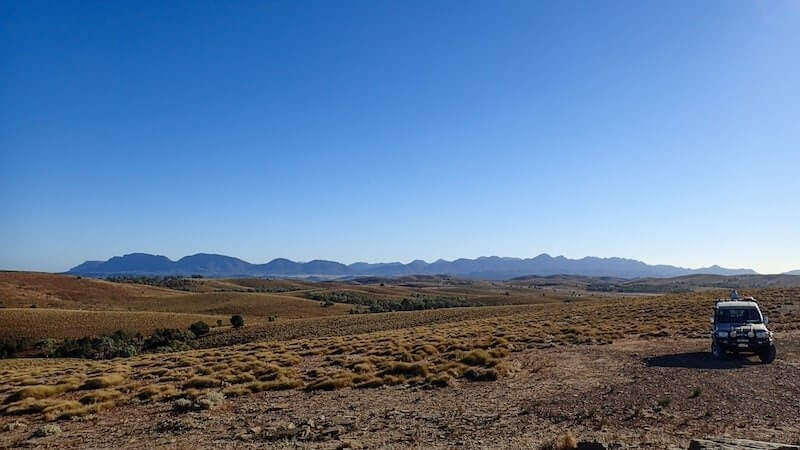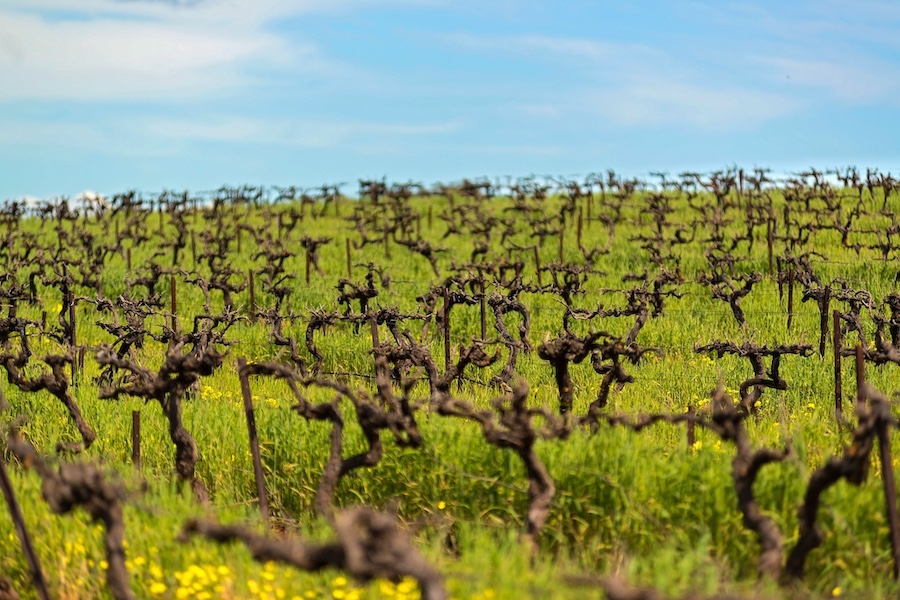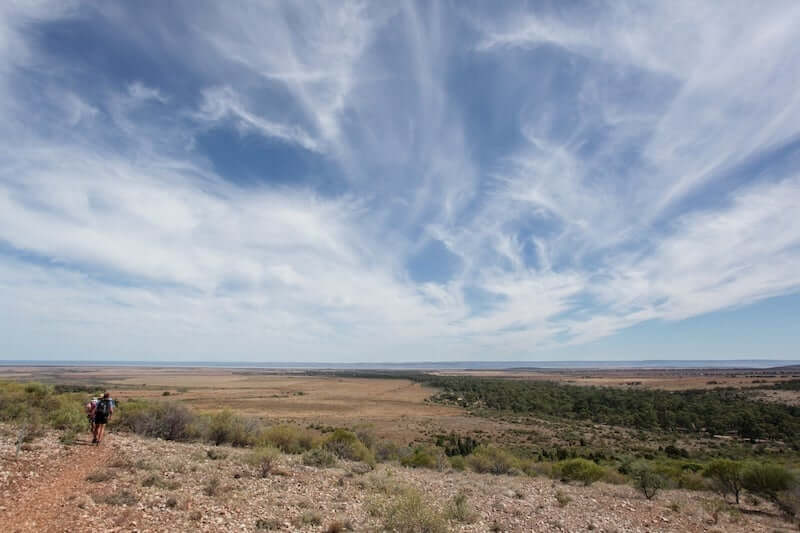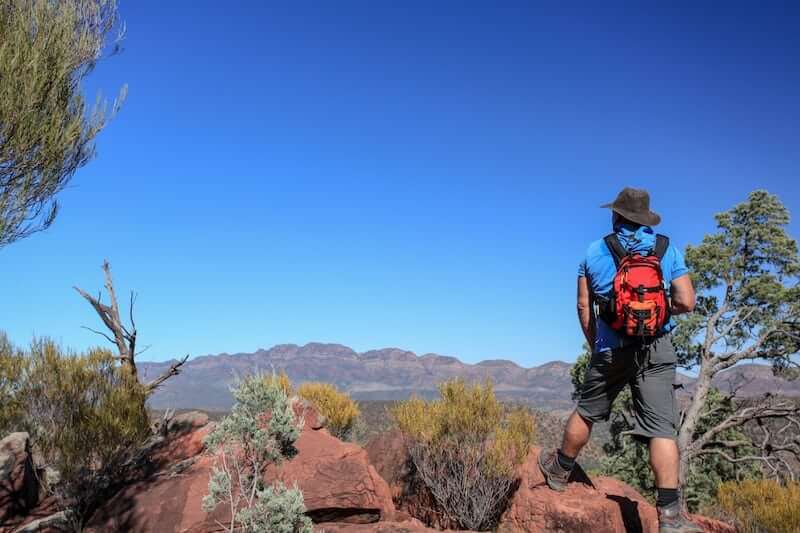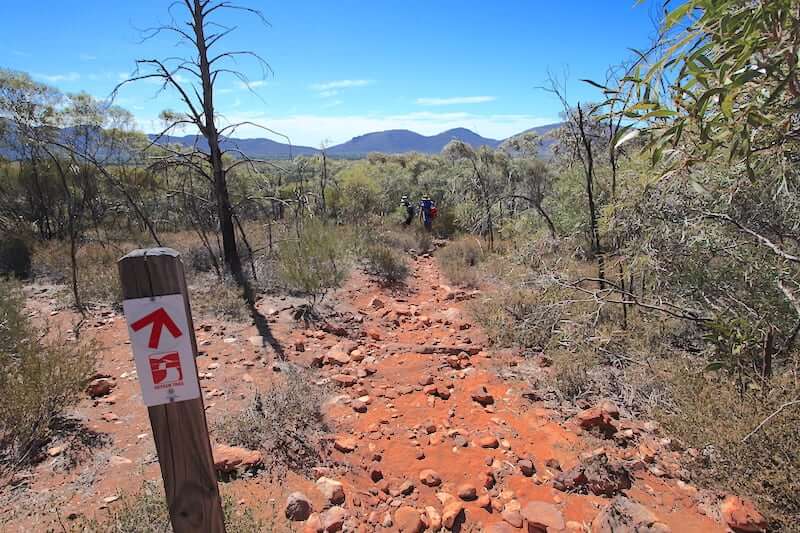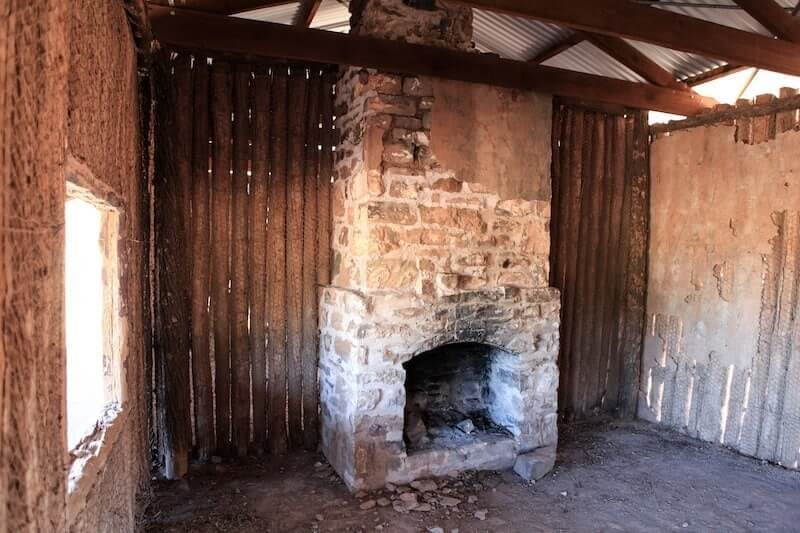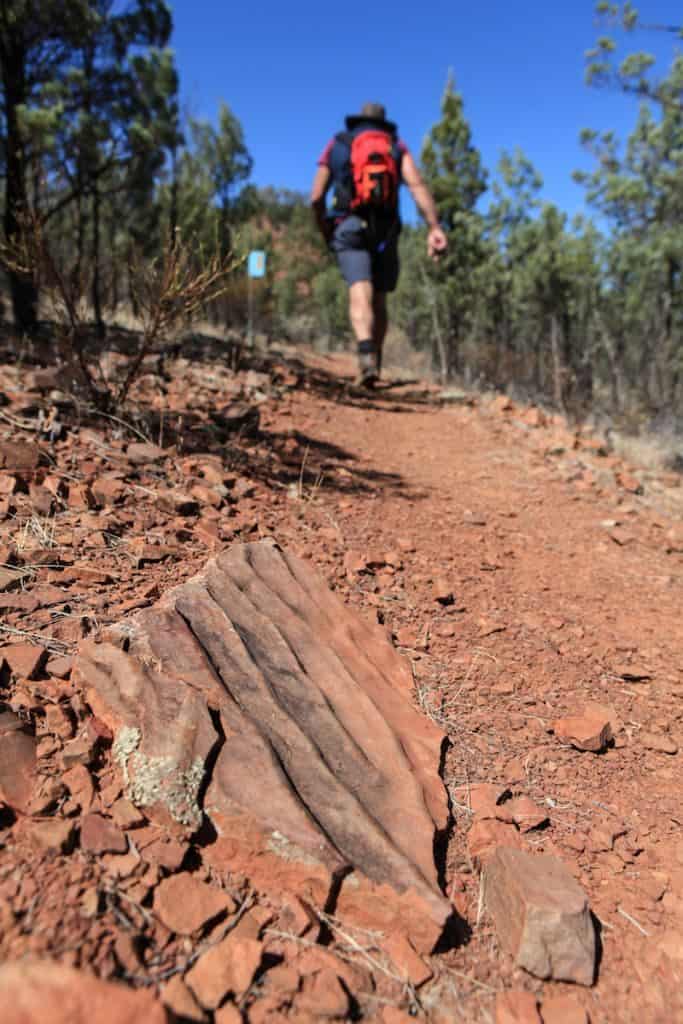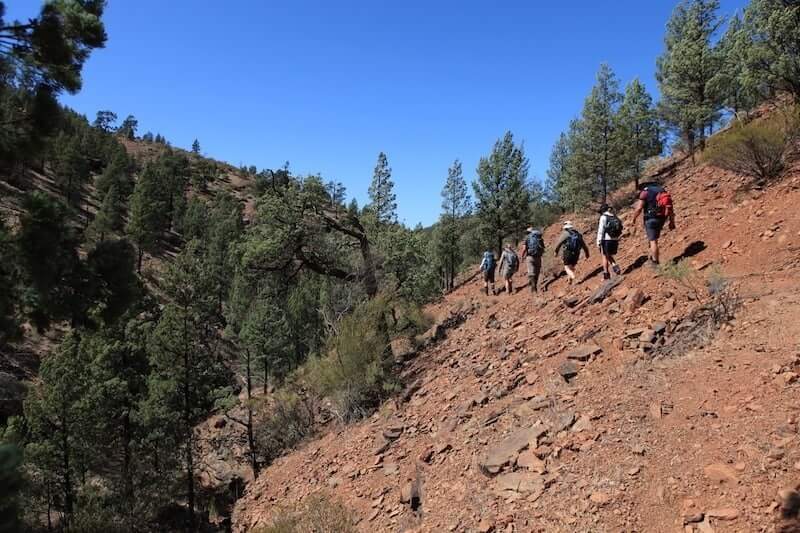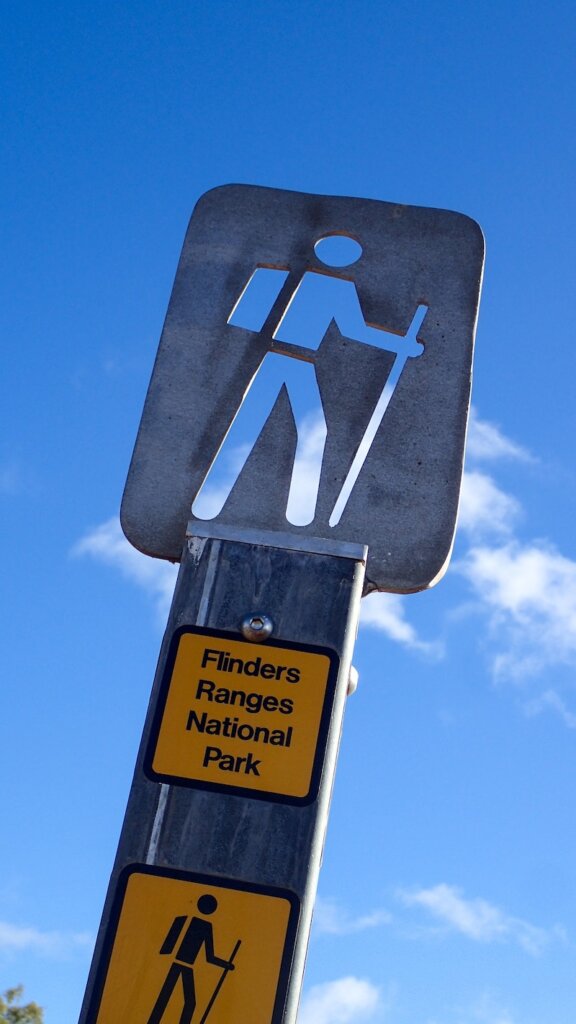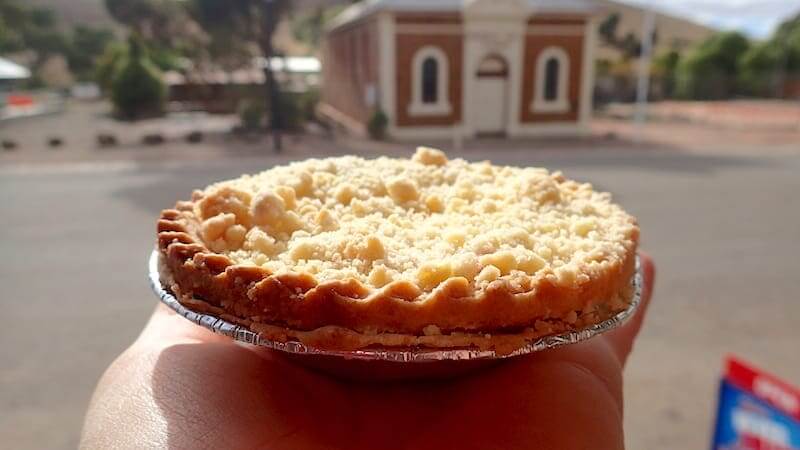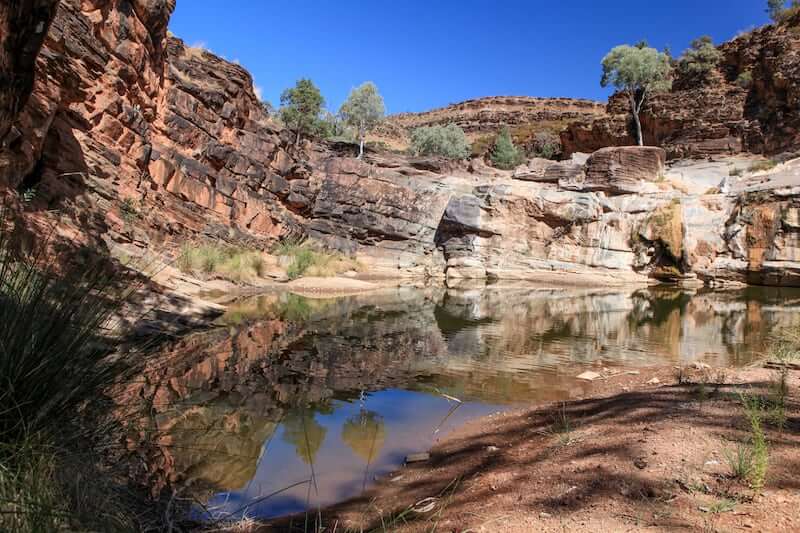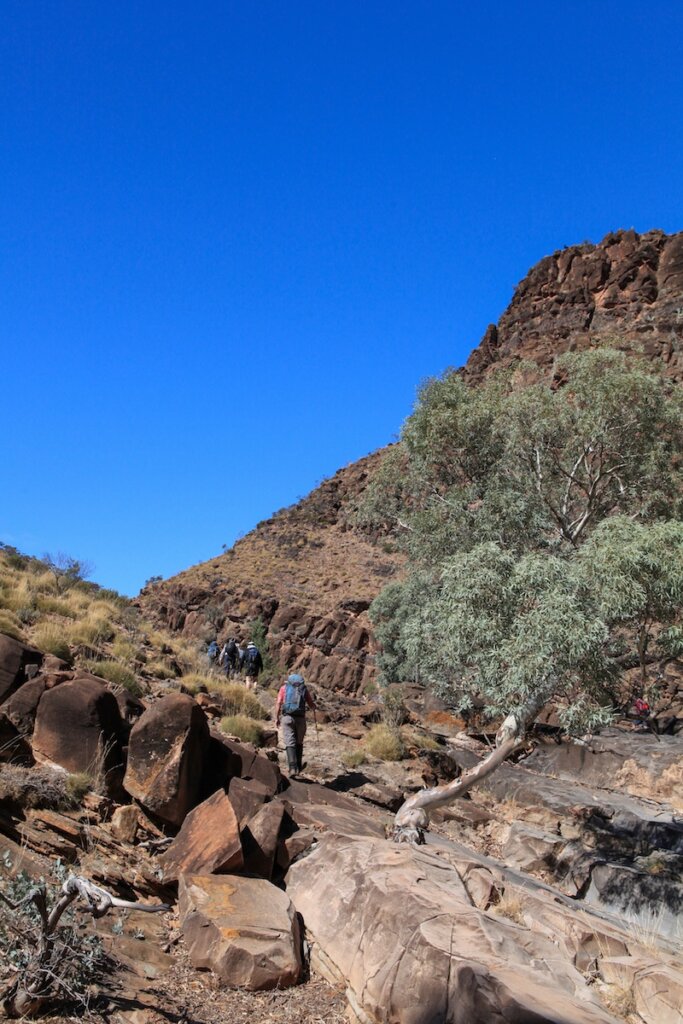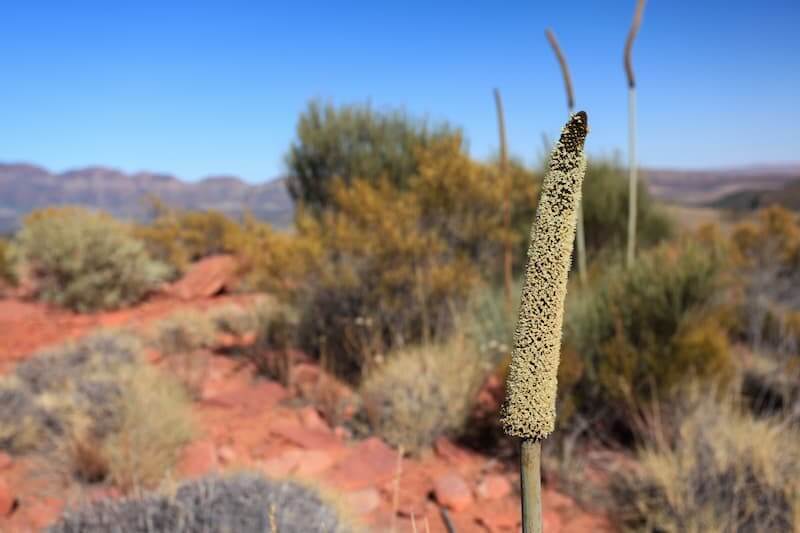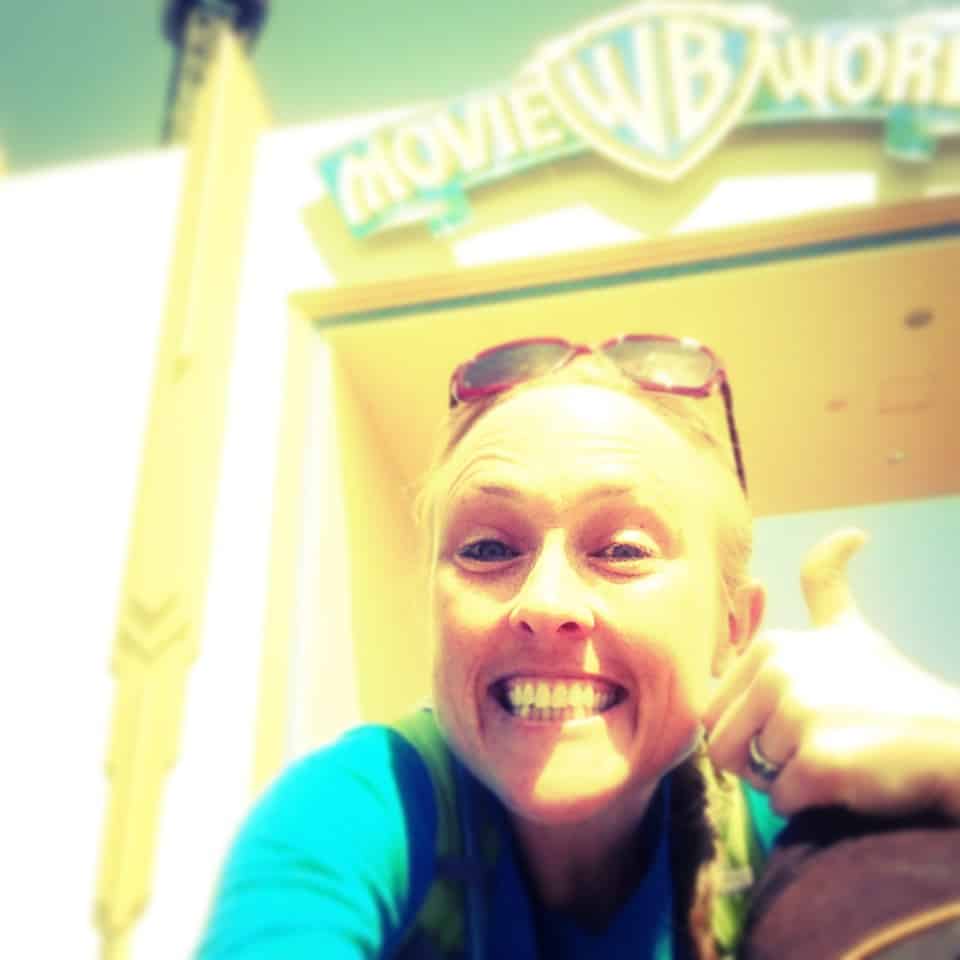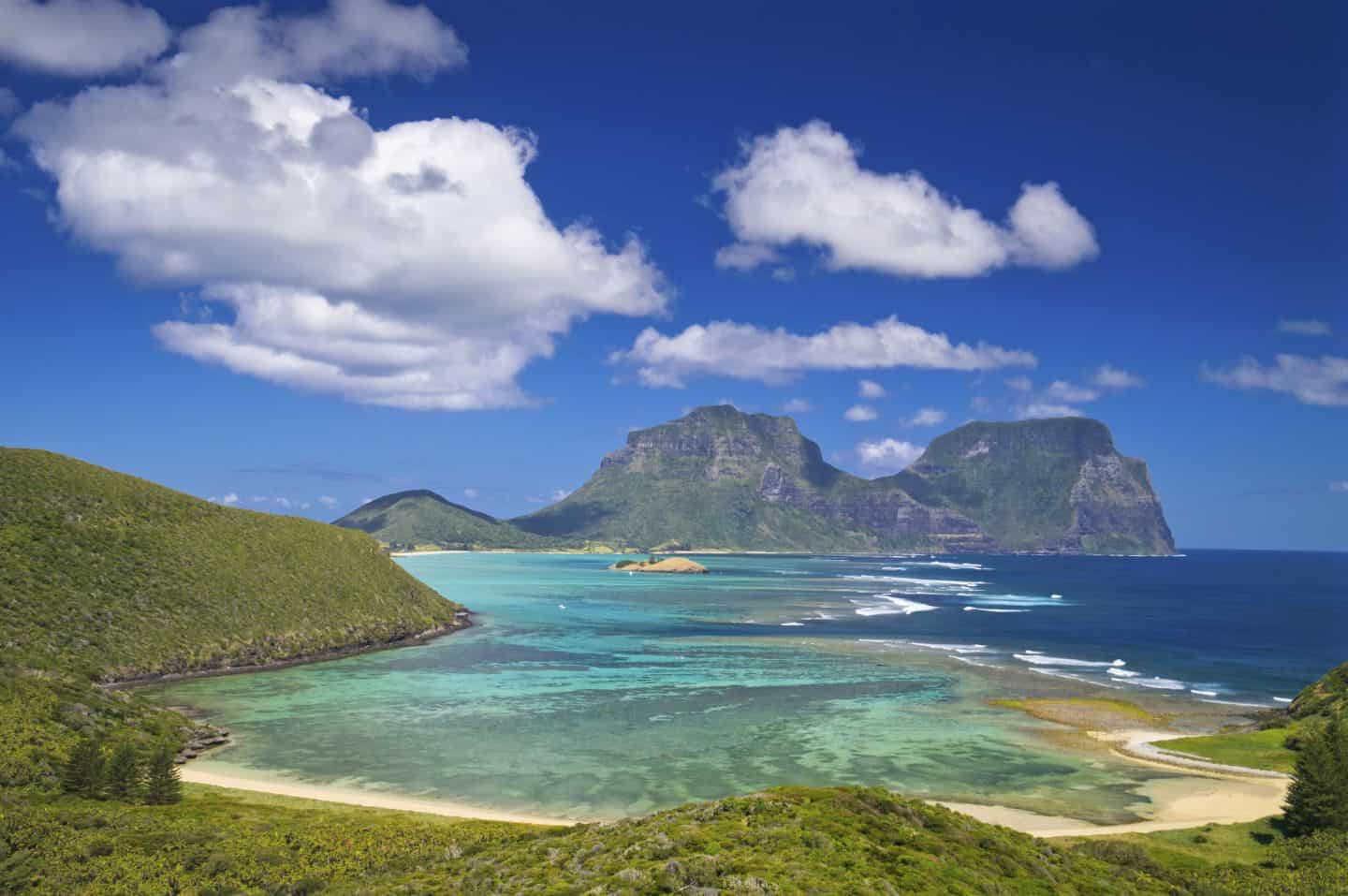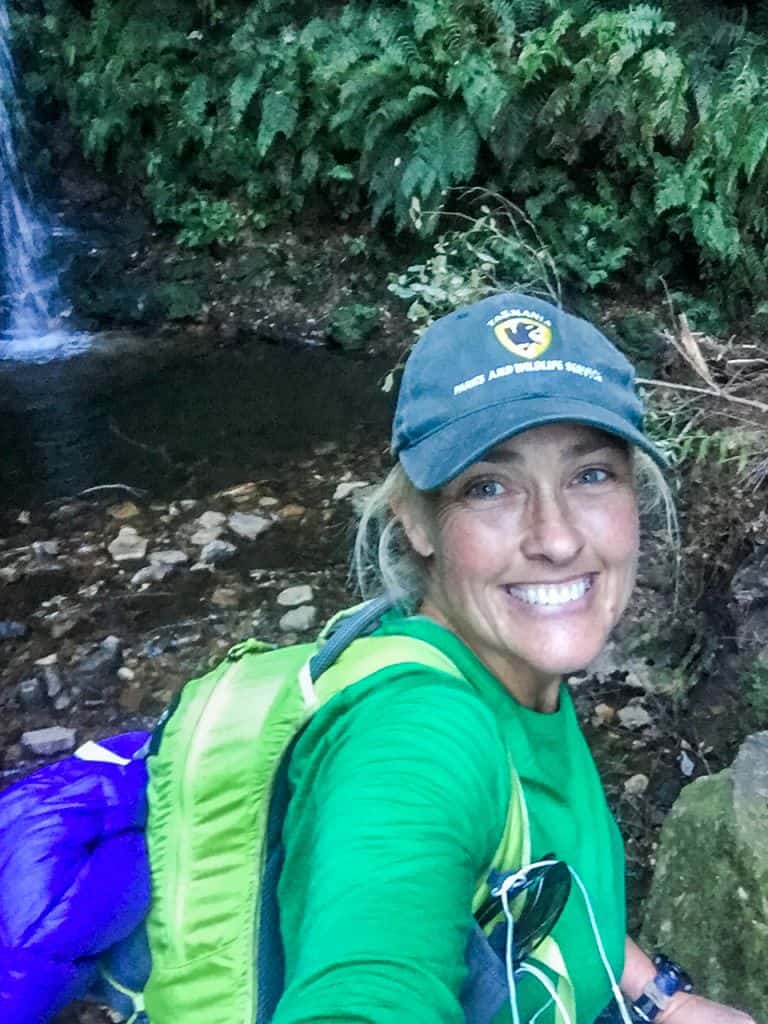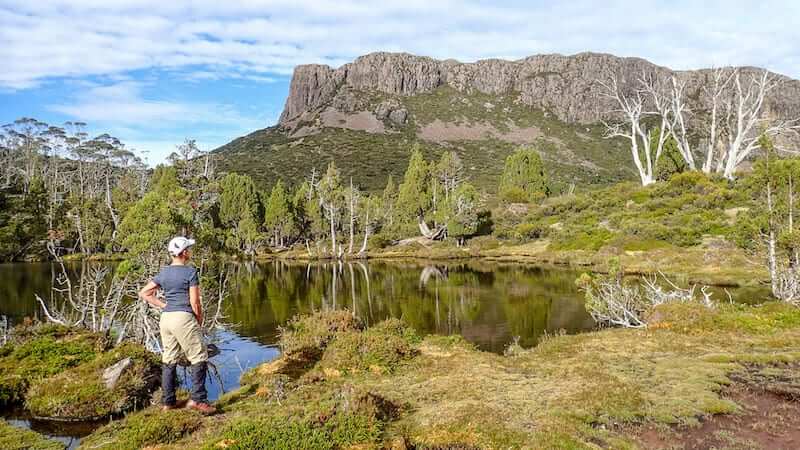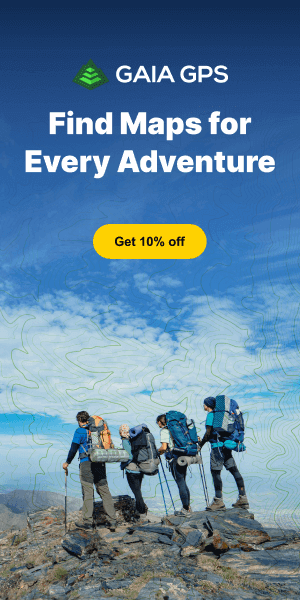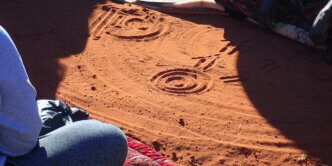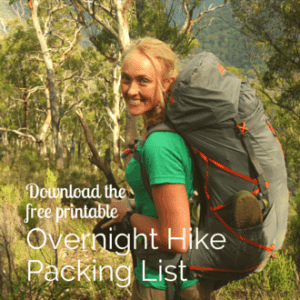Book this trip
Where is Ikara-Flinders Ranges?
400 km north of Adelaide, a giant lies waiting.
But unlike children’s fairytales, this giant doesn’t sleep. This giant is very much alive and has been constantly on the move for 800 million years.
Leaving the iconic stone buildings of Adelaide behind and travelling through grain-growing areas, with their endlessly flat olive greens and oranges, you start to sense the giant’s form.
By the time the softest pink crystalline diamonds of Lake Lochiel’s salt farm catch your eye, you can see his arms stretching out east to west in front of you. Arms that reach out to you and draw you into the treasure that lies within the giant’s lair. And what treasure it is!
One of the greatest clues as to the amount and variety of treasures that lie within the Ikara-Flinders Ranges (within Adnyamathanha Country), is in its name.
It’s familiar to Australians but until you visit, the plurality of its name escapes you, for it is a collection of multiples. The limbs of this giant are numerous and form a family of dramatic, razor-topped ridges, collectively running 430 km from Lake Callabonna in the north to Port Pirie in the south, with Ikara-Flinders Ranges National Park claiming 95,000 hectares.
Heysen Range, Chace Range, ABC Range (with 26 peaks), Elder Range, Bunbinyunna Range, Ulowdna Range, Druid Range, Red Range, Yappala Range, Bald Hill Range and Yourambulla Range: with an area this size, it would be easy to be overwhelmed and intimidated not only by the scale, but the thought of trying to behold it’s brightest treasures within a limited time.
With just five days ahead of us, our small party of eight (including two guides) pushed the pause button on the speed of our lives and slowed down to enter and walk within the giant’s kingdom.
Day 1 – Adelaide to Rawnsley Park (via Clare Valley)
With the irony of a walking holiday starting with a 5-hour drive, the time passes quickly with geology and history lessons to bring us up to speed.
From the ancient processes that formed the Adelaide Geosyncline from Oodnadatta to Kangaroo Island 800 million years ago, to the First Peoples with 15,000 years of Adnyamathanha (‘hills or rock’ people) story, to 1802 when Matthew Flinders sailed past mapping the coastline.
As our eyes were being opened to the expansive skies of inland South Australia, our minds were broadened to match.
I was all set for ochre colours to fill my view for the coming days and had completely forgotten that we were to pass through one of my favourite wine regions, the Clare Valley on the drive. Did someone say, Riesling?
Two-thirds into our journey north, we welcome the feel of the easy track beneath our (mandatory for Ikara-Flinders) walking boots as we stretch our legs on a short walk to investigate the Tetris-meets-Jenga style ruins of Kanyaka Station and eerily named, Death Rock.
The warm, dry air outside the minivan gives us a hint of what to expect for the rest of the trip as I let my hands find the bark of the first of many River Red Gums for the trip. I love these trees!
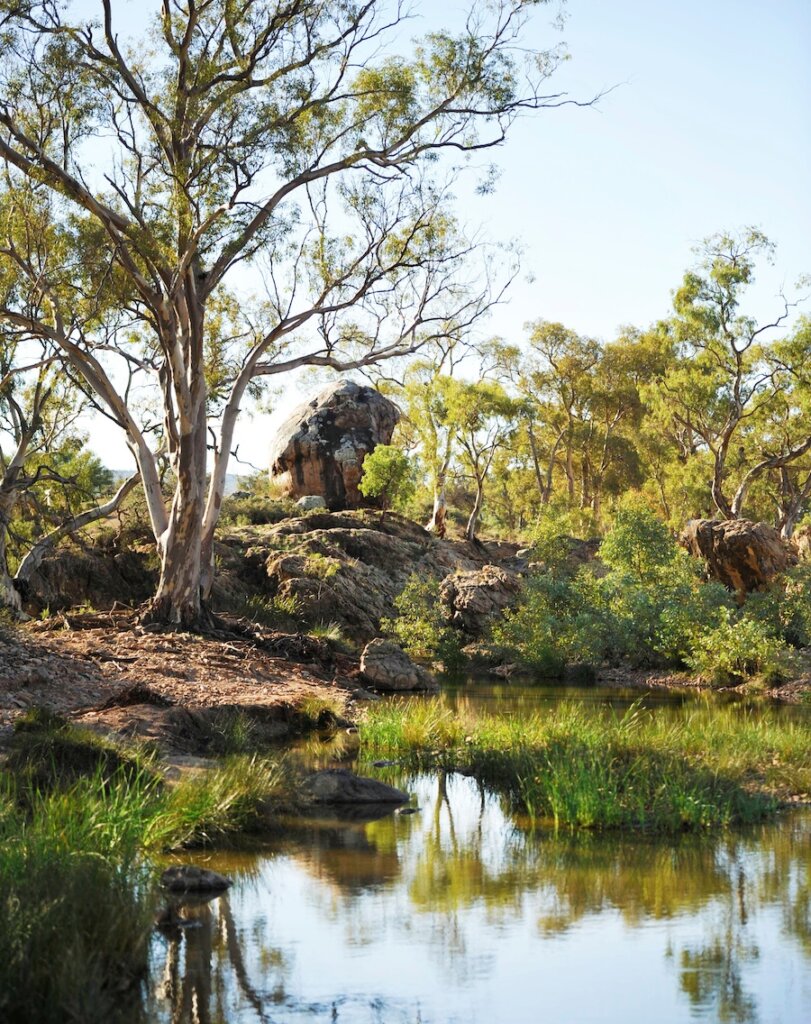
For most people, when they think of the Flinders Ranges, they think of Wilpena Pound. With iconic aerial views that allow an appreciation of this 11 km x 8 km amphitheatre, the Pound waits for us on Day 2. But for now, we are fully satisfied to be approaching its southeastern wall, called Rawnsley Bluff. The Bluff stands proud like the Sphinx, rising not from desert sands but golden spinifex grasses – all waving to the conquering hero above.
This Bluff becomes our homely touchstone each day as we return to rest, relax and dine at the 3.5 star holiday units at Rawnsley Park Station.
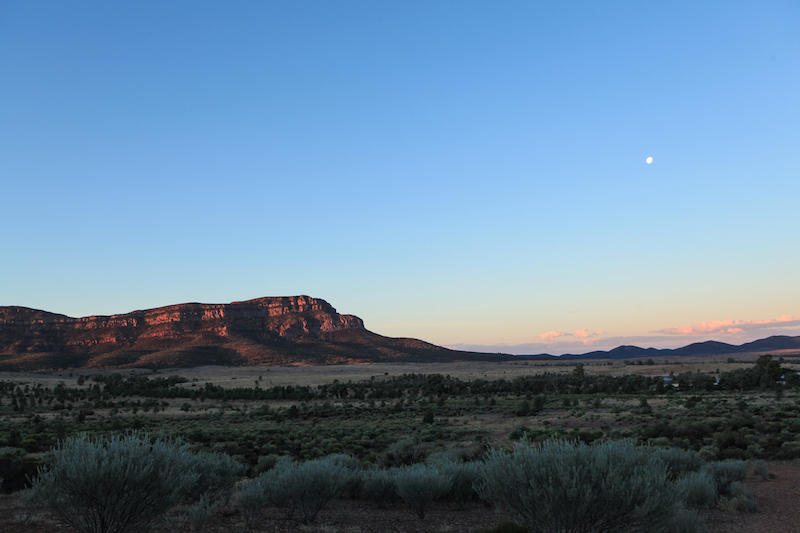
Day 2 – Bridle Gap to Wilpena Pound
The day starts with a breathless ascent from Bunbinyunna Creek, deep in Arkaba Station and leads us up and through Bridle Gap. All along this rocky route we are treated to multiple moments of rest, allowing us to not only catch our breath, but take in the vastness of the Southern Flinders Ranges.
The 12 km day brought us not only over the fort-like walls of the natural amphitheatre that is Wilpena Pound, but across the middle of what was one of the three original 1850’s pastoral leases of Wilpena, Arkaba and Aroona Stations.
After descending through Mallee scrub with its multiple trunks, spinifex and paddy melons (flora, not fauna), the enormity of the Pound becomes apparent. Although the Pound boasts the highest annual rainfall within the Ikara-Flinders National Park (435 mm), it still made for incredibly tough conditions for the early white pastoralists. Our lunch stop at the old Hills Homestead allows a glimpse into what life might have been like for these people and their toughened approach to carving out a future in such an arid and seemingly unkind place.
It was when we were sitting around the campfire, having watched the purple-red ochre colours dance across the Bluff for sunset and nibbling on cheese and biccies, that I came to truly appreciate the benefits of staying outside of the cloisters of the Pound. Away from the tourists, gift shops, caravans and worn tracks, we had our own holy ground here, watching the nearly-full moon rise with a frosty halo that only a chilled night can bring.
Day 3 – Heysen Trail, Brachina Gorge & Cultural immersion
Yuluna Circuit // Heysen Trail
South Australia’s famous multi-day track, the Heysen Trail, is a 1200 km route from Parachilna Gorge in the Northern Flinders Ranges to Cape Jervis on the Fleurieu Peninsula.
One of the key selling points for this five day tour is that it allows you to walk in and out of the best bits of the Ikara-Flinders part of the trail, with the luxury of someone else doing the planning, driving, cooking and logistics.
Today is the day when all we’ve learnt about geology and history comes together; in many ways, a day of turmoil.
“We bore the brunt of every thieving tribe of natives from all points, as well as of innumerable wild dogs; always short-handed and served by the dregs of the colony in the shape of shepherds and hut keepers, so that the profits derived from the Station were small and in some years nil.”
John Hayward’s diary
I wondered if the ‘discovery’ of permanent springs at the three station sites may have been assisted by the local aboriginal people. A people for whom living in community, without a sense of ownership of resources, may have led to Hayward’s opinion. A harsh opinion when in his diary he went on to account for losses from the herd of 7,738 sheep in 1852, of only 92 ‘stolen’ by aboriginals. His way of dealing with such losses described thus,
“… we stalked them, coming upon them half asleep… we kept up a running fire on them as they bolted up the Flinders Ranges.”
John Hayward, 1928
Walking away from the homestead site we walked away from stones cut by man, to see stones carved by nature.
The giant geological thumbprint of the Flinders’ ancient past laid bare, was best summed up by fellow walker Belinda, a school teacher from Victoria:
“This whole area is like a storybook. All the rocks are laid open for you to read it.”
The interpretive descriptions from the last few days came alive before us as twisted, gnarled layers of rock, surrounded us in dried creek beds. Danish pastry layers upon layers, alongside ripple rocks that whisper songs of Gondwana. It would be too easy to sit for days just staring up at these faces of rock. To let the mind go and imagine the immense pressures that have created them. In fact, if you sit for too long you may feel them too, as these places are still experiencing tremors and movements as the earth continues to form underneath us.
Brachina Gorge
Alas, we must pull ourselves away to drive to Brachina Gorge where we build upon our ever-increasing fauna count, by spying out a shy colony of yellow-footed rock wallabies enjoying the last of the day’s warmth.
Wadna Cultural Tour
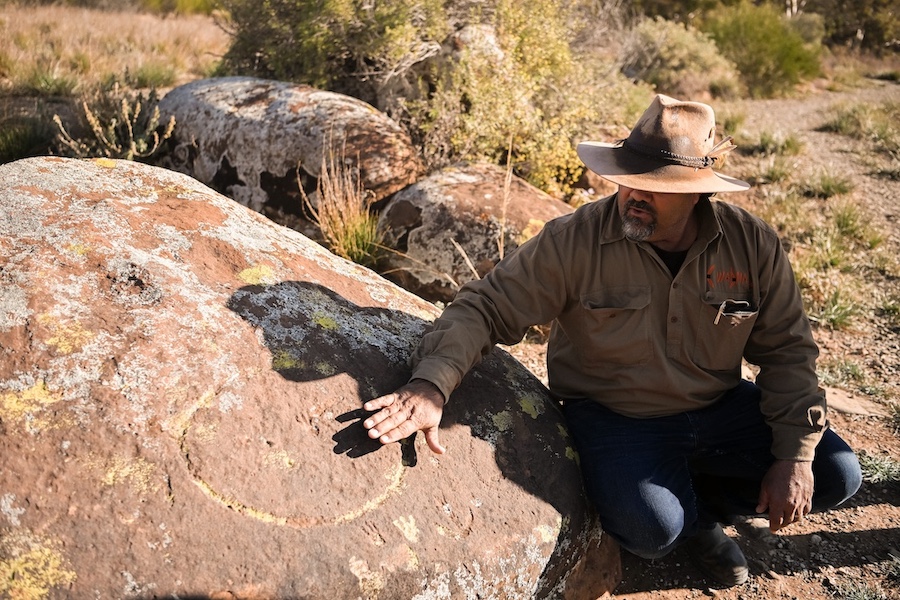
I’m trying to take in all I’m learning of this new-to-me area: landscapes, plants, geology and history. It’s time to bring in the powerful perspective of the Traditional Owners of this Country with the afternoon spent in the generous presence of Kristian Coulthard. Growing up in Nepabunna, just to the north of Ikara-Flinders, he previously worked as a ranger before setting up his well-respected Aboriginal cultural tour business, Wadna.
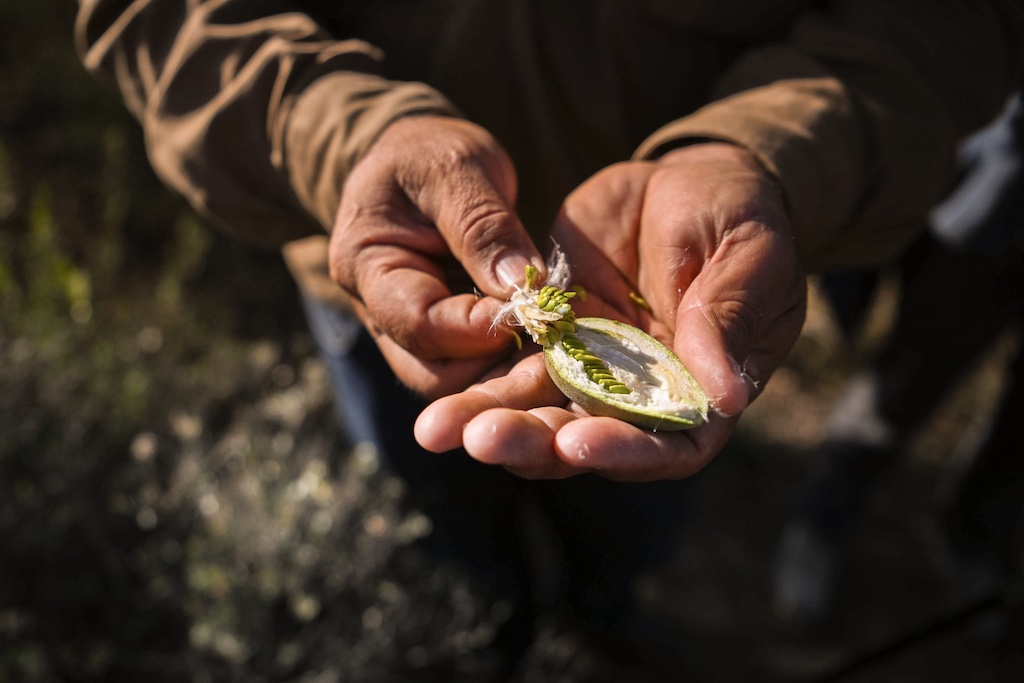
Day 4 – Blinman Pools
Pushing ourselves further north alongside the ridgebacks of the Ranges, we head for the quaint, historic copper mining town of Blinman. Although the largest producer of copper in the Ranges since 1864, the town is now famous for its delicious quandong pies and the feisty community spirit of its 20 permanent residents. With pie-filled bellies, we drive on to walk the 12 km return trip to Blinman Pools.
The crystal clear waters of this Tetris-stacked ochre gorge, along with the echoing moans of feral goats high above us, draw us ever deeper towards the pool at the head. A perfect spot for lunch and a refreshing swim under deep azure skies and the watchful gaze of a Wedge-Tailed Eagle.
As tomorrow’s end to the trip looms before us, we push onwards to the trailhead of the Heysen Trail at Parachilna Gorge. Its name just one of the sing-song words from the Adnyamathanha language that are common in this place.
Back at our Rawnsley Bluff base, we arrive on dusk to the sounds of Ringneck Parrots and their stunning blue, green and yellow hues.
Day 5 – Alligator Gorge to Adelaide
Thankfully, departure day doesn’t mean the end of our walking adventures in the Flinders Ranges. The 5 hour journey back to Adelaide is broken once again, by revisiting the Mount Remarkable National Park. This time, however, we’re on the eastern side near the town of Melrose and walk through the impressive Alligator Gorge.
The Gorge runs that thin line between canyon and gorge and it’s our last chance to view our old friends of the week: the giant river red gums, made famous by Hans Heysen’s paintings, their bark glowing metallic white and silver; dancing families of emu, their feathered tutus more graceful than Swan Lake; and the three breeds of kangaroos that have amused us – reds, euros and western greys. But most important, to farewell the geological giant, whose arms have so warmly embraced us.
I heeded the quiet beckoning of the stone giant to the north and felt this friendly giant’s warm embrace. I will be back.
A version of this article first appeared in Great Walks Magazine. Caro travelled as a guest of ParkTrek.

